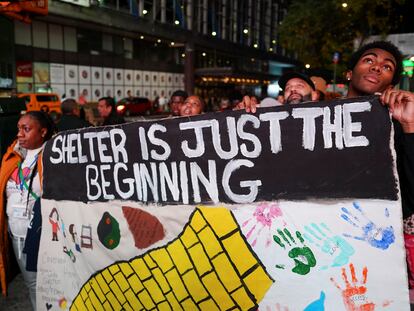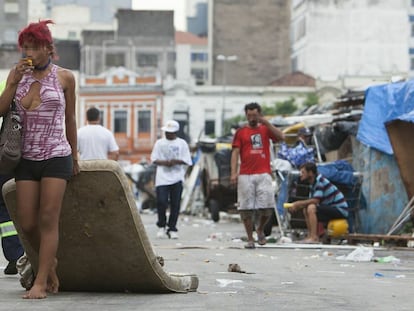The social power of modular tiny homes
A groundbreaking project led by a small NGO in Cambridge, England is exploring innovative approaches to providing temporary housing for the homeless
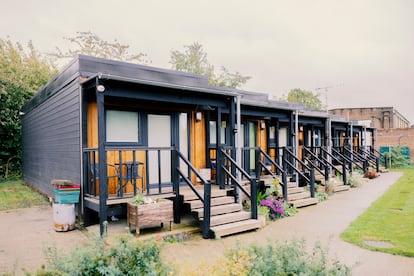
Matt Wiseman doesn’t know what was different in his ninth attempt at detox after eight failures. But it worked that time. That’s why, 12 years later, he emphasizes understanding and patience as key factors when working with homeless people, many of whom struggle with mental health and addiction problems. “Never give up – that’s what I learned,” he said. That’s why we visited the modest offices of Jimmy’s Cambridge, a NGO in the English town of the same name. This is the perspective on life that has transformed this small non-profit organization into a social innovation laboratory. Its pioneering project consists of four small residential developments of modular tiny houses. The 22 standalone homes measure 270 square feet each, complete with furniture, bathrooms, kitchens and front porches. These houses create a community for homeless individuals, serving as a step towards regaining control of their lives with help and supervision from Jimmy’s Cambridge.
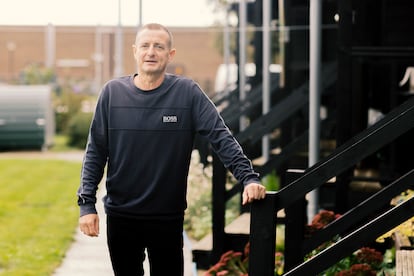
Factory-built houses, assembled from modules and ready for transport, are now a common solution to homelessness. In Europe, almost 900,000 people are homeless, a 70% increase since 2000, according to the European Federation of National Organizations Working with the Homeless (FEANTSA). In the U.S., the number is approximately 653,000, the highest since 2007. The Barcelona City Council has provided temporary accommodation for the homeless in apartments made from repurposed shipping containers since 2019. Similarly, the Hilda L. Solis Care First Village was built in Los Angeles during the pandemic. It offers 132 rooms built from shipping containers, and provides support services along with a full commercial kitchen.
Shipping containers still have negative connotations, but the Cambridge project is different. The houses, built with laminated wood, offer independent living in a downtown area close to services and jobs. This is crucial for various reasons, including the ability to have pets. Homeless people often avoid shelters to keep their dogs or cats with them, according to Madrid’s social workers.
“In cities where there’s immense pressure and limited space for new homes, the key is to utilize small, available spaces to put up those houses. And in five or ten years, you can simply take the crane, lift the modular homes, and move them to another site,” said Mark Allan, the CEO of Jimmy’s Cambridge.
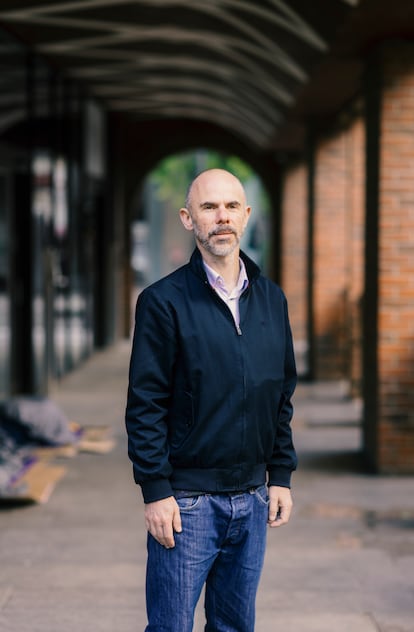
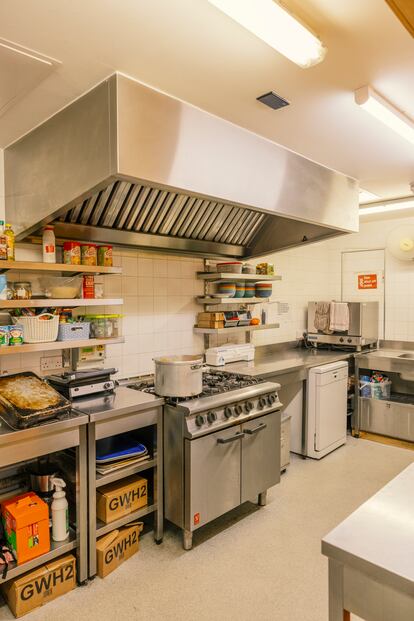
Allan doesn’t know how or where the idea of tiny houses originated. He simply says that it emerged from the fortuitous convergence of various organizations who were in the right place at the right time. One NGO was looking for a way to provide affordable housing quickly in the expensive city of Cambridge, while another – Allia – was focusing on innovative solutions for socially impactful companies and organizations. The New Meaning Foundation was a social enterprise specializing in ethical construction, and the Church of Christ the Redeemer had an empty lot available. “Nothing ever happens in isolation. It’s all about the community coming together,” said Allan.
That’s how the first tiny home community was born in 2020. Three more communities were later developed with houses donated by The Hill Group of London on land donated by the Cambridge City Council. The first development has six homes to the east of Cambridge, near the airport. Each home has a front porch, and unlike the later developments, they also share a spacious front yard. Independence is key – the ability to open and close your own door is very powerful. But so is the ability to connect with others and avoid isolation. “We’ve learned that having a smaller number of units [three developments with six houses and one with four] is actually better because it helps create a mini-community spirit,” said Allan. “And having a common area is very important. That’s where the big yard comes in – it’s a place where people can hang out and get to know each other. The first development is the one that really hit the mark. It’s not just about throwing up a bunch of houses.”
In reality, it’s about finding a balance, which involves addressing the negative aspects of homelessness. “You know, it’s really sad when you see someone doing really well, but you also know that it’ll be tough for them. They’ll struggle when their neighbors in other modules aren’t doing so great. We’re still searching for answers to that, but haven’t found any yet,” said Wiseman. He has been with the project from the start and now leads the team working with the residents. He firmly believes that once they figure it all out, the project will be a brilliant success.
But Wiseman knows that success won’t be easy. He’s seen tenants forced to move due to drug traffickers preying on vulnerable individuals. Others have been evicted for attacking neighbors. Despite their best efforts, some struggle to overcome addiction. “I’m always amazed by the power of addiction,” sighs Wiseman. “Crack is one of the worst drugs because there’s no pharmacological substitute for it.”
Wiseman has seen three residents successfully transition to their own apartments, while others are on the verge of doing so. Others have found stability in these tiny houses and choose to stay. Experts from the Cambridge Center for Housing and Planning Research who evaluated the project recommended “being flexible with the length of tenancy... extending it beyond the initial two-year period can help residents, especially those with higher needs, to have more time to improve their circumstances before moving on.”
The Cambridge Center report also recommends that mini-developments have a shared green space, and applauds the NGO’s pre-leasing process to assess candidate suitability. “At first, it’s not easy to follow all the rules,” said Wiseman. “For instance, tenants have to be home by 11pm, which means they’re losing money. You see, peak panhandling hours in Cambridge are from 11pm to 4am. They can bring in up to £200 [$255] a day!”
Residents also have to apply for welfare to pay the €200 ($218) weekly rent and may be asked to contribute to maintenance expenses of about €11 ($12) per week. The NGO handles the necessary arrangements, pays workers, and covers all bills (water, electricity, television and security cameras). Although Jimmy’s Cambridge staff assist with the process, the new responsibilities can overwhelm some long-term street dwellers. Therefore, an intermediate shelter stage that gradually introduces rules and responsibilities has proven highly beneficial.
Trevor, a resident of the first tiny houses for over three years, followed this path. After losing his wife and son in a traffic accident in 1999, Trevor’s life took a downward spiral. He began using drugs and resorted to crime for survival. He spent several stints in jail and many nights on the streets. However, everything changed when he crossed paths with Carol Fendick of Jimmy’s Cambridge. After spending 18 months in one of their shelters, Trevor moved into a tiny house. He regained his independence, started his carpentry hobby again, and found a way to stay clean. Now, at 63 years old, Trevor is ready to hand over his tiny house to someone else in need.
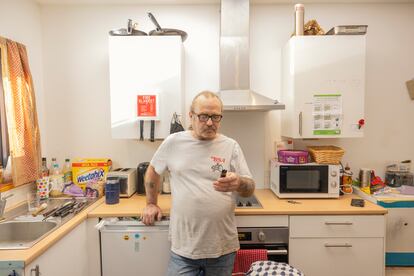

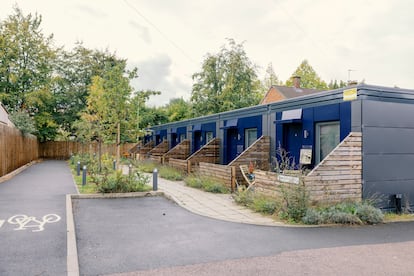
Carol Fendick, the person who rescued Trevor from the streets, now manages Jimmy’s 451, a residence for individuals with complex mental health and addiction issues. Her compassionate yet firm approach is evident when she patiently reminds a former drug-abusing resident about a doctor’s appointment that he could not miss. Fendick, Weisman and Allan said accessing psychological and psychiatric help while battling addiction is a huge challenge for many, but is crucial for overcoming these struggles.
Experts say childhood abuse, violence and trauma often lead to homelessness, and become worse with each day spent living on the streets. “Our goal is to get people off the streets as soon as possible, and then provide them with all the support they need to resolve whatever it was that led them to end up there,” said Allan. In the context of what some call a “global housing crisis,” Jimmy’s Cambridge approach is simple: try, try again. This includes offering shelters, shared homes, and even an “abstinence house” for people who have just come out of detox. The modular mini-houses are their latest effort, but they know that this alone may not fully address the complex problem of homelessness. Nevertheless, they present a viable alternative that has proven to be effective for some people, even on their ninth try.
Sign up for our weekly newsletter to get more English-language news coverage from EL PAÍS USA Edition
Tu suscripción se está usando en otro dispositivo
¿Quieres añadir otro usuario a tu suscripción?
Si continúas leyendo en este dispositivo, no se podrá leer en el otro.
FlechaTu suscripción se está usando en otro dispositivo y solo puedes acceder a EL PAÍS desde un dispositivo a la vez.
Si quieres compartir tu cuenta, cambia tu suscripción a la modalidad Premium, así podrás añadir otro usuario. Cada uno accederá con su propia cuenta de email, lo que os permitirá personalizar vuestra experiencia en EL PAÍS.
¿Tienes una suscripción de empresa? Accede aquí para contratar más cuentas.
En el caso de no saber quién está usando tu cuenta, te recomendamos cambiar tu contraseña aquí.
Si decides continuar compartiendo tu cuenta, este mensaje se mostrará en tu dispositivo y en el de la otra persona que está usando tu cuenta de forma indefinida, afectando a tu experiencia de lectura. Puedes consultar aquí los términos y condiciones de la suscripción digital.
More information
Últimas noticias
Maduro pleads not guilty before the federal court in New York: ‘I am still the president of Venezuela’
A new test can detect Alzheimer’s from a finger prick
UN team enters Sudanese city of El Fasher after paramilitary massacre: ‘It’s like a ghost town’
A recipe for resistance: Indigenous peoples politicize their struggles from the kitchen
Most viewed
- Gilles Lipovetsky: ‘If you want to live better and fall in love, take Prozac, don’t look to philosophy’
- Alain Aspect, Nobel laureate in physics: ‘Einstein was so smart that he would have had to recognize quantum entanglement’
- Alvin Hellerstein, a 92-year-old judge appointed by Bill Clinton, to preside over Maduro’s trial in New York
- Maduro’s downfall puts China’s relationship with Venezuela to the test
- Why oil has been at the center of Venezuela-US conflicts for decades

